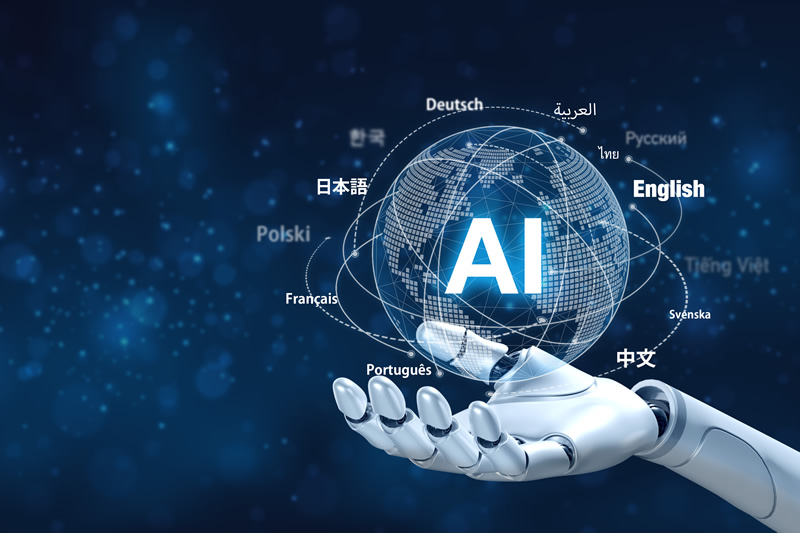In recent years, Large Language Models (LLMs) have revolutionized the field of natural language processing, promising unprecedented capabilities in machine translation. These models, powered by advanced artificial intelligence (AI) algorithms, have made significant strides in understanding and generating human-like text. As the world becomes more interconnected, the demand for efficient and accurate translation solutions is greater than ever. This article explores the exciting possibilities that LLMs bring to the realm of translation while emphasizing the irreplaceable role of human linguists.
The Power of Large Language Models
Large Language Models, such as OpenAI’s GPT, have demonstrated an impressive ability to comprehend context, generate coherent text, and even mimic the nuances of different writing styles. These models, trained on vast datasets encompassing diverse languages and topics, offer a promising avenue for breaking down language barriers in an increasingly globalized world.
In everyday conversation, informal communication, and simple content translation, LLMs have proven highly effective. They can quickly process and generate translations for common phrases and sentences, providing users with accessible tools to navigate languages they may not be proficient in.
Evolving Landscape of Translation
The advent of LLMs has spurred the development of more sophisticated translation solutions. Companies are integrating these models into their platforms, enabling users to translate text with a level of accuracy and fluency that was once unimaginable. This evolution is particularly evident in the realm of online content translation, where LLMs have facilitated communication on a global scale.
However, the potential applications of LLMs extend far beyond basic translation. These models can assist in content creation, and summarization, and even help users draft documents in languages they may not be fluent in. As they continue to improve, LLMs have the potential to transform the way we communicate and collaborate across linguistic boundaries.
The Limitations of Large Language Models
While LLMs showcase remarkable capabilities, it is crucial to recognize their limitations, especially in specialized domains like business, science, and medicine. The intricacies of technical language, industry-specific terminology, and the need for precise and context-aware translations pose significant challenges for purely AI-driven systems.
In business, the accuracy of communication is a critical concern. The subtle nuances of negotiation, the understanding of legal terms, and the precision required in financial transactions demand a level of linguistic finesse that LLMs, as of now, struggle to fully grasp. Human linguists, with their expertise and cultural understanding, play an indispensable role in ensuring that business communication is accurate, nuanced, and culturally sensitive.
Similarly, in scientific fields, the stakes are high when it comes to accurate communication. Research papers, technical documents, and academic publications often involve complex terminology that requires deep domain knowledge. Human translators with a background in the specific scientific discipline are better equipped to handle the nuances and intricacies of these documents, ensuring that the intended meaning is accurately conveyed.
In the realm of medicine, translation involves a unique set of challenges, as it requires not only linguistic proficiency but also a deep understanding of complex medical terminology and procedures. Patients’ well-being and safety hinge on accurate communication of diagnoses, treatment plans, and medical histories. Human linguists with a background in the medical field bring a level of expertise that is critical in ensuring precision and clarity in healthcare communication.
The Human Touch in Translation
While LLMs are powerful tools for broad language tasks, the human touch remains irreplaceable in certain domains. In business, science, and medicine, where precision and context are critically important, the expertise of human linguists is invaluable. A linguist’s ability to understand the nuances of language, cultural context, and industry-specific jargon adds a layer of sophistication that machines, as of now, cannot replicate.
The Future of Translation
As technology continues to advance, the synergy between Large Language Models and human linguists holds the key to the future of translation. Rather than viewing AI as a replacement, it should be seen as a complement to human expertise. The evolving landscape of translation will likely involve a collaborative approach, where AI-driven tools assist human linguists in handling routine and straightforward tasks, allowing them to focus on more complex and specialized aspects of translation.
Bottom Line
Large Language Models undeniably represent a groundbreaking leap in the field of translation, offering unparalleled capabilities in understanding and generating human-like text. However, as we peer into the future of translation, it is crucial to recognize the distinctive strengths of both machines and humans. In technical fields, where precision, context, and cultural understanding are an overriding concern, the human touch in translation remains indispensable. As we navigate this terrain, the collaborative integration of AI and human expertise holds the key to unlocking the full potential of translation in our increasingly interconnected globe.


